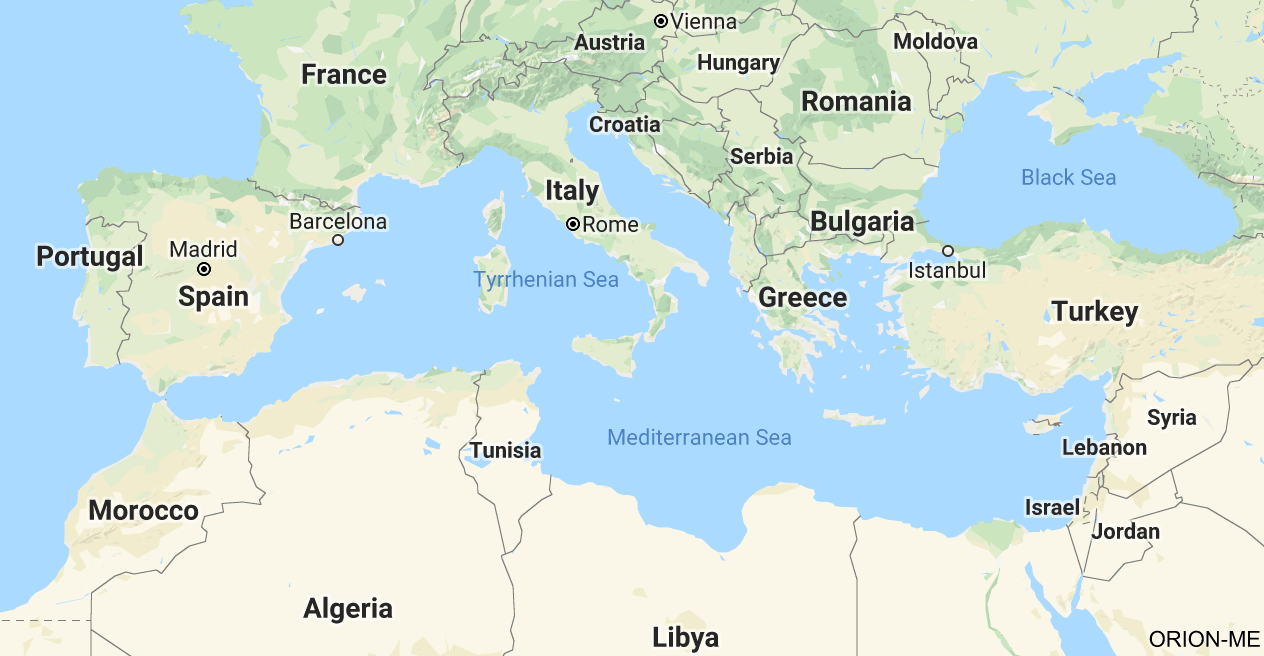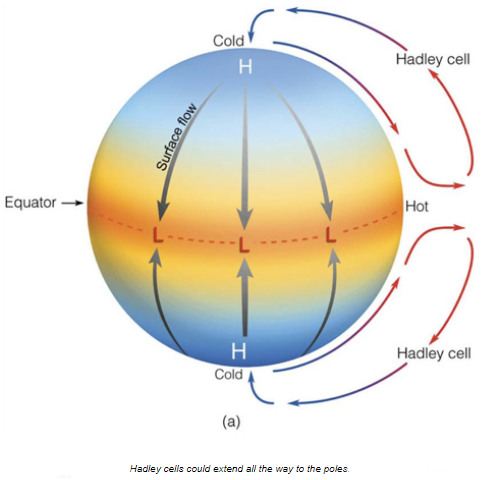Important Facts For Prelims
Azores High
- 12 Jul 2022
- 6 min read
Why in News?
Recently, a study revealed that an extremely large ‘Azores High’ (a subtropical weather phenomenon) has resulted in abnormally dry conditions across the western Mediterranean, including the Iberian Peninsula, primarily occupied by Spain and Portugal.
What do we mean by Azores High?
- About:
- Azores High is a subtropical high pressure system that extends over the eastern subtropical North Atlantic and western Europe during winter.
- It is associated with anticyclonic winds in the subtropical North Atlantic.
- It is formed by dry air aloft descending the subtropics and coincides with the downward branch of the Hadley Circulation.
- Hadley Circulation:
What are the Effects of Azores High?
- An annual drying of 5-10 millimetres per year per decade has been recorded in the Iberian Peninsula throughout the second half of the 20th century.
- A further 10-20% drop in winter precipitation is expected by the end of the 21st century.
- These projected changes make agriculture of the Iberian region some of the most vulnerable in Europe. The study projected:
- Olive-growing regions in southern Spain will suffer a 30% decline in production by 2100
- Cultivation area in grape-growing regions across the Iberian Peninsula will shrink 25% - 99% by 2050 due to severe water deficits that will render land unsuitable for viticulture.
Why are Azores High Expanding?
- The Azores High expansion is driven by external climate forces and that the only external forcing that produces this signal in the industrial era is atmospheric greenhouse gas concentrations.
- Azores High expansion emerged after 1850 and strengthened in the twentieth century, consistent with anthropogenically driven warming.
- The researchers explored the changing atmospheric conditions since the onset of the industrial era that contributed to these regional hydroclimatic changes by assessing how the characteristics of the Azores High varied over the past 1,200 years.
UPSC Civil Services Examination Previous Year Question (PYQ)
Q. Consider the following pairs: (2019)
| Sea | Bordering Country | |
| 1. | Adriatic Sea | Albania |
| 2. | Black Sea | Croatia |
| 3. | Caspian Sea | Kazakhstan |
| 4. | Mediterranean Sea | Morocco |
| 5. | Red Sea | Syria |
Which of the pairs given above are correctly matched?
(a) 1, 2 and 4 only
(b) 1, 3 and 4 only
(c) 2 and 5 only
(d) 1, 2, 3, 4 and 5
Ans: (b)
Exp:
- The Adriatic Sea is a part of the Mediterranean Sea positioned between the eastern coastline of Italy, and countries of the Balkan Peninsula, from Slovenia, through Croatia, Bosnia and Herzegovina, Montenegro, and to Albania. Hence, pair 1 is correctly matched.
- The Black Sea is an inland sea located between far southeastern Europe and the far western edges of the continent of Asia and the country of Turkey. It is bordered by Turkey, Bulgaria, Romania, Ukraine, Russia and Georgia. Hence, pair 2 is not correctly matched.
- The Caspian Sea is an enclosed body of water between Asia and Europe. It is bordered by Iran, Turkmenistan, Kazakhstan, Azerbaijan and Russia. Hence, pair 3 is correctly matched.
- There are 21 countries which border the Mediterranean Sea. These are Spain, France, Monaco, Italy, Malta, Slovenia, Croatia, Bosnia and Herzegovina, Montenegro, Albania, Greece, Turkey, Cyprus, Syria, Lebanon, Israel, Egypt, Libya, Tunisia, Algeria and Morocco.
- Morocco’s Mediterranean coast represents the westernmost edge of the Northern African coast. The coastline features the Strait of Gibraltar that marks the link between the Mediterranean Sea and the Atlantic Ocean. Hence, pair 4 is correctly matched.
- There are six countries (Saudi Arabia, Yemen, Egypt, Sudan, Eritrea, and Djibouti) bordering the Red Sea. Hence, pair 5 is not correctly matched. Therefore, option (b) is the correct answer.
Q. Mediterranean Sea is a border of which of the following countries? (2017)
- Jordan
- Iraq
- Lebanon
- Syria
Select the correct answer using the code given below:
(a) 1, 2 and 3 only
(b) 2 and 3 only
(c) 3 and 4 only
(d) 1, 3 and 4 only
Ans: (c)
Exp:
- The following countries have a coastline on the Mediterranean Sea:
- Northern shore (from west to east): Spain, France, Monaco, Italy, Slovenia, Croatia, Bosnia and Herzegovina, Montenegro, Albania, Greece, Turkey.
- Eastern shore (from north to south): Turkey, Syria, Lebanon, Israel, Egypt. Hence, 3 and 4 are correct.
- Southern shore (from west to east): Morocco, Algeria, Tunisia, Libya, Egypt.
- Island nations: Malta, Cyprus. Therefore, option (c) is the correct answer.








